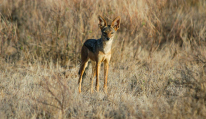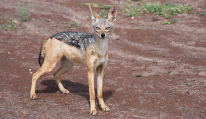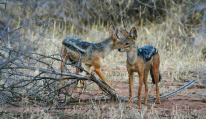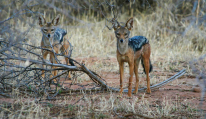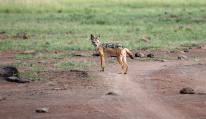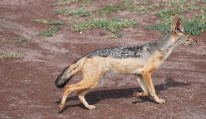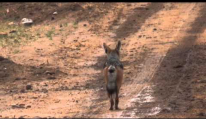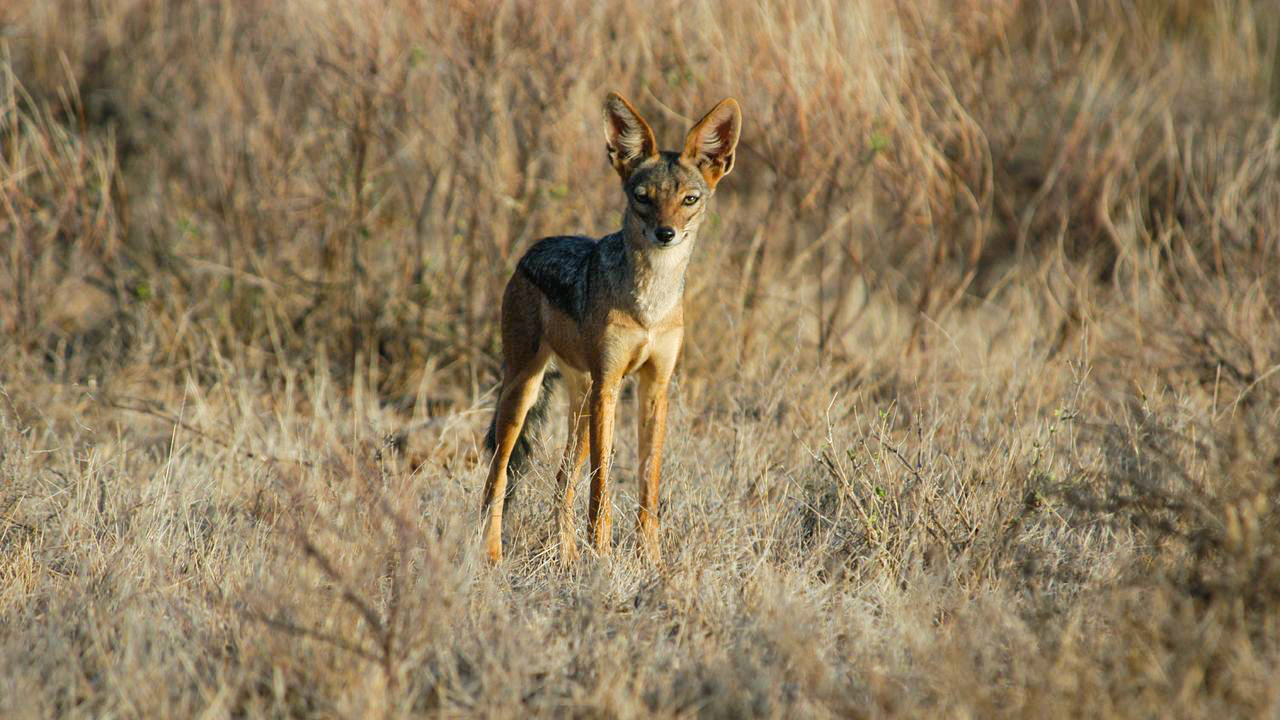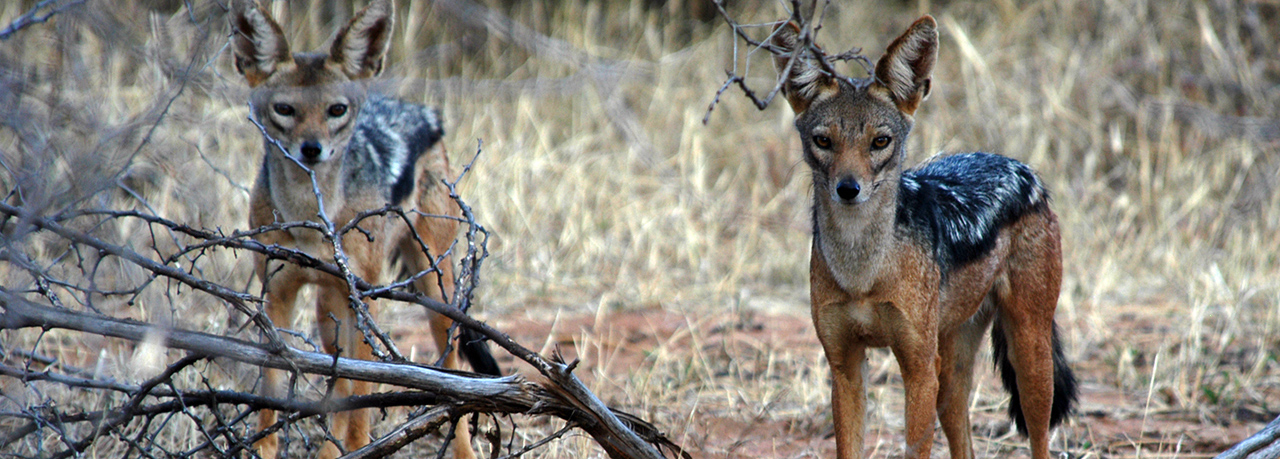Social Structure
Black-backed jackals mate for life. When one mate dies, the other will most likely lose its territory. Juveniles remain with their parents until they are one year old, and may stay longer to help their parents raise the next litter of pups.
Communication
Black-backed jackals communicate to mark their territories for neighboring pairs and to warn group members of an intruder. A mated pair outlines its territory with urine and fecal marks and reinforces its boundaries with vocalizations. A “high-pitched, whining howl” calls group members together, while more frantic yelps signal an intruder.
Behavior
Black-backed jackals are thought to be more aggressive than other jackal species. This trait allows them to “steal” prize habitat and food sources from other jackals.
Conservation
Black-backed jackal populations thrive in protected areas throughout their distribution. Their numbers suffer in areas where humans target them as livestock killers and rabies carriers, but black-backed jackal populations rebound rapidly in response to significant decreases.




